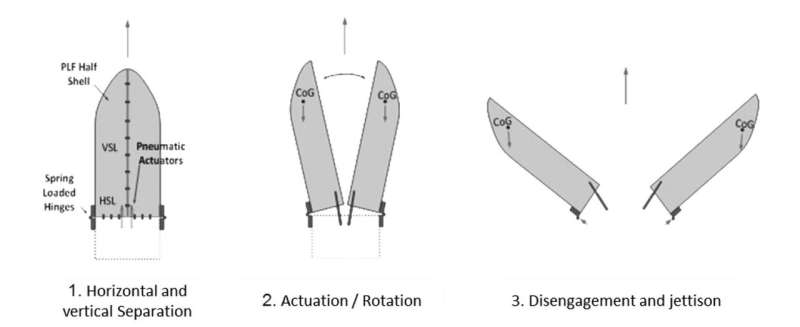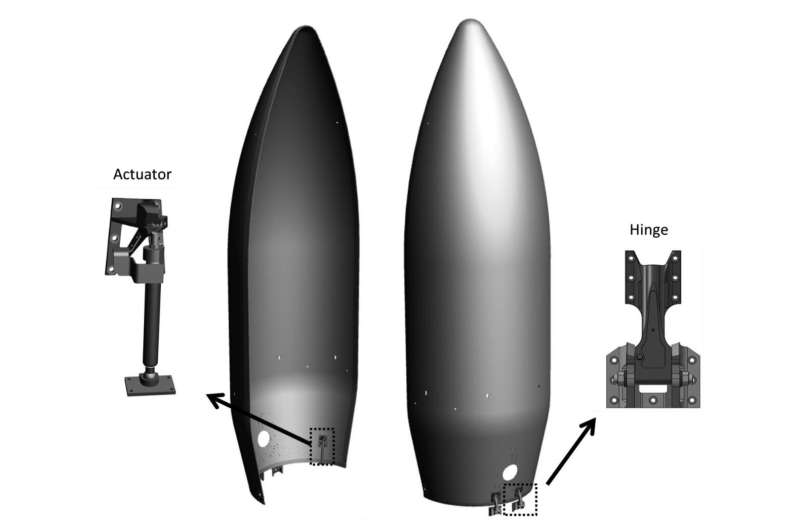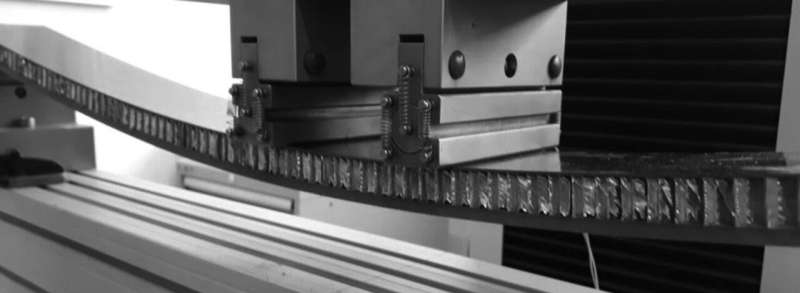New rocket fairing design offers smoother quieter ride

Satellites are built to live in the harsh environment of space but engineers must also factor in the rigours of the journey there. ESA has helped RUAG Space Switzerland to develop new rocket fairings that offer a smoother quieter ride to space.
RUAG manufactures fairings for Europe's Ariane and Vega launchers and has recently shown how a micro-perforation of the facesheet of the panels of the fairing can reduce noise and vibrations, and how a new hinge and actuation system could reduce the shock of separating the fairing from the launch vehicle when it reaches space.
"Current technology relies on a simple, compact and highly dependable system that sheds the protective fairing at about three minutes into the flight at an altitude of some 100 km, which is when the rocket enters space," explained Jorgen Bru, ESA's Future Launchers Preparatory Programme Technology Manager.
New low-shock fairing separation and jettison
"Typically two pyrotechnic mechanisms detonate to burst hinges open allowing the fairing half shells to safely separate and twist away from the payload stowed inside. It all happens in a split second and is a highly precise, synchronised event."
These pyrotechnic devices are jettisoned with the fairing. They deliver a powerful force while being relatively light and compact, and are proven technology.
"However, when these pyrotechnic devices are activated, it creates a strong shock effect which is transferred to the launcher and its payload. Satellites are designed to withstand this but companies are now requesting more comfort," added Jorgen.
Pyrotechnic systems require thorough testing before being qualified for flight, which is intense, expensive and requires vacuum conditions. A major benefit of RUAG's replacement low-shock separation and jettison system is that no expensive vacuum chamber is needed for tests because separation relies on a slightly slower non-pyrotechnic process making the friction with air in ground testing much less significant.
RUAG can achieve the same results using a set of pre-loaded hinges and pneumatic actuators combined with a passive jettison system that pushes the parts away once the separation systems are actuated.
"This new separation and jettison system, based on hinge and actuator, reduces shock and increases payload comfort during the separation event," added Alberto Sánchez Cebrian, Project Manager at RUAG.

Each separation system is discrete. This modular approach reduces development costs as parts can be improved or replaced without affecting the whole system. Testing is simpler and the mechanism requires no synchronisation either.
Tests were carried out on a 2.6 m Vega fairing but the new system is scalable for fairings of Europe's heavy launcher Ariane.
Alongside the separation tests, modelling of a built in noise-reducing perforated insulation layer within the fairing's sandwich panels provided a promising noise reduction solution with no increase in mass or volume.
Significant noise reduction was achieved with no apparent impact on the structural performance of the sandwich panels. This system could replace acoustic absorber mats used currently in rocket fairings. Testing of larger panels will continue in the next project phase.

These activities were funded and carried out within ESA's Future Launchers Preparatory Programme.
RUAG's fairing modifications will allow designs of more delicate satellites and relax requirements on the launch vehicle.
Provided by European Space Agency



















